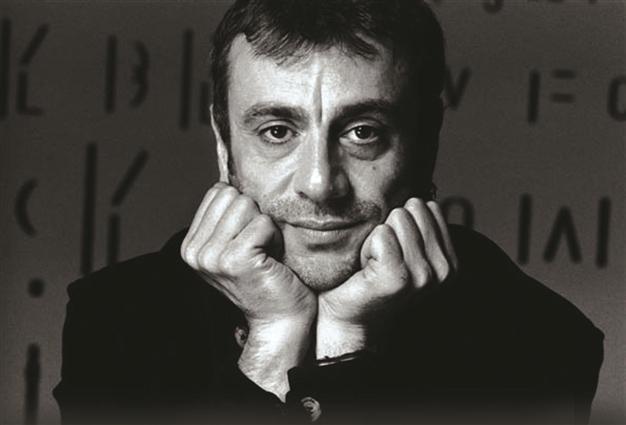Kutluğ Ataman: Portrait of an artist suffering ‘social lynching’
Emrah GÜLER ANKARA - Hürriyet Daily News

Ataman is a contemporary artist and also creator of groundbreaking works and films such as ‘Lola+Bilidikid,’ ‘Women Who Wear Wigs’
Kultuğ Ataman could very well be the epitome of the artist of the new century. He is an internationally acclaimed artist with a vision that transcends boundaries, and has sensitivities to his home country, Turkey, that continue to be a major part of his work. He is an award-winning director, yet doesn’t refrain from trying new models in producing, evident in his quest to finance his latest feature “South Facing Wall” through Kickstarter, a crowd-sourcing website.
Ataman is also not the one to limit his work to one form. His film and video installations have been major players in Istanbul and Venice Biennales, and some of his collections have made it to MoMA New York and the Tate. Ataman has been nominated for the Turner Prize, and won a Carnegie Prize. Lending a voice to the underdog, the underrepresented and the marginalized has always been his signature from his feature films to works of contemporary art.
Take his second feature, “Lola+Bilidikid” of 1998, for instance. Long before LGBT communities were socially accepted and visible, Ataman had made them the star of his movie. Focusing on Turkish communities in Berlin, he put both sexual and ethnic minorities at the center of his movie.
In another groundbreaking work, “Women Who Wear Wigs,” presented at the 48th Venice Biennale, Ataman screened interviews with four women who had to wear wigs in a four-screen video installation. The women were a terrorist in disguise, a journalist going through chemotherapy, a Muslim student banned from wearing her headscarf in the classroom, and a transsexual sex worker and activist who had to shave her hair after being arrested.
Given the body of work over a span of two decades that often became the voice of the oppressed, it was a blow for many to follow Ataman’s reaction to the Gezi Park protests, which erupted in late May against the ruling Justice and Development Party’s (AKP) increasingly autocratic and oppressive regime. His initial tweets that displayed solidarity with the protesters were soon replaced by
an article he wrote for the Independent.The article, published on June 11, began with praise for the AKP for “a new language of freedom and democracy,” while its introductory paragraph ended with, “[The AKP] deserves applause for these developments.” The article included some accurate observations like, “What has arrived is a new language. A civilian language that is anti-authoritarian and inclusive. The government may only be realizing about this.” However, Ataman’s tone of voice was not much different than that of the government, dismissing the police violence completely, mentioning it merely as a “knee-jerk reaction of the powerful state.”
The ‘AK contemporary artist’“In turn, as democrats in Turkey, we have to align ourselves with the government,” wrote Ataman, “BUT never fail to criticize when it shows authoritarian reflexes.” While the word “but” may have been in capital letters, many expressed their dismay at his complete inability to criticize what had happened.
Two weeks into the protests, Prime Minister Recep Tayyip Erdoğan invited a group of 11 people, including artists, academics and students, to listen to the demands of the protesters. Soon, the Taksim Platform, the representative body of the protests, announced that they were not notified about the meeting and that the group “does not represent” the protesters across the country. The group included Ataman as well.
Backlash was immediate, especially from fellow filmmakers, who had set up a Filmmakers’ Tent in the colorful tent city in Gezi Park, only to be raided by the police with tear gas. At around the same time, more than 700 film professionals, including directors like Özcan Alper, Fatih Akın and actors like Halit Ergenç, as well as 13 film associations, had issued a call to the government, urging “the termination of police violence, an end to threats of intervention and continuation of the dialogue.”
So when Ataman visited the tent before his visit to gather talking points before his meeting with the prime minister and AKP officials, he did not receive the warm welcome he was probably hoping for. He was asked to leave by writer and producer Önder Çakar amid an imminent brawl. What Ataman called a “social lynching” didn’t die down, but instead escalated to a new level following an interview in daily Star last week. The interview, in fact, was a show of hostility toward everyone from the leftist and Kemalist groups that were part of the Gezi protests, the “drunk and loud, beaten-cum-romantic leftist artists that are over 50,” filmmakers, the so-called White Turks who are “preparing to run concentration camps,” as well as conspirators in the arts circles.
Daily Radikal columnist Cüneyt Özdemir, among others, penned a furious article three days later, coining a new term for Ataman: “Following the Gezi protests, we had our AK wrestler, AK businessman, AK journalist. We now have a brand-new AK contemporary artist.”Many artists were accused of being out of touch or indifferent to the Gezi protests in the last two-and-a-half months. But, unlike actor Şafak Sezer, who personally apologized to Erdoğan for initially supporting the protests, and TV host and comedian Okan Bayülgen, who likewise distanced himself after offering support in late May, Ataman’s public reactions are treated on a different scale, fitting with what Özdemir would call “AK artists”: People who show initial solidarity, both on the streets and on social media, mostly in line with their public persona, then flip 180 degrees so as not to alienate the government for reasons of their own but that are not hard to guess.
